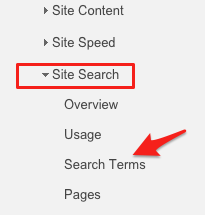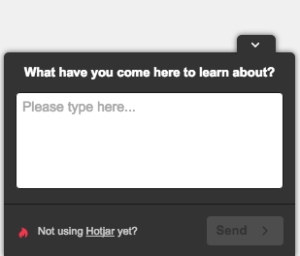Congratulations on launching a company blog. The place where you will market your companies expertise in whatever it is you do.
Now the hard stuff starts.
You thought the hard part was getting the blog designed and populated with some launch posts right?
Wrong.
The hard graft comes now…..the strategy to market the blog…..creating awareness that it exists….creating content which is required by your audience……optimising it to attract long tail search traffic….and so on.
In this post I want to share 5 things you should be doing pretty more or less straight away post blog launch.
1) Mine your analytics data for search query data for content ideas
Get your analytics out and view the “site search” query data. This is what people have typed into that little search box on your website. Go through it and see if you can pick out topics or content ideas which could form good and relevant blog post titles.
Example: If I saw lots of people searching my site for “ventilation” then I may write posts about how to deal with ventilation issues.
You can also analyse your search query data in Webmaster Tools and Google Analytics although the latter maybe limited. Filter queries by those which start with “how, what, why, and can” (question based searches). Instant blog post titles right there.
Try to avoid a stringent editorial calendar too populated with what your PR agency thinks you should write about. Write based on user needs and requirements. Not on what’s easiest to write.
2) Run some research to find out what your audience wants to learn about
It’s amazing how many companies I speak to that don’t run good research projects. The crappy customer satisfaction surveys is bullshit and useless so didn’t even go there.
I’m talking about segmenting your databases by audience type and really asking them some tough questions about the industry, your area of expertise and their needs.
You could do this by email, telephone or even on-site questionnaires/surveys using tools such as Webengage – this is super on-site user feedback tool! A must have. You could also use a tool called Hotjar but this limited targeting options in my opinion.
My favourite on-site question is “What have you come here to learn about?”. This question will give you some great insight into what it is your audience wants to know and why they have come to you.
3) Make the “creating content” part of the process someones responsibility
You know why most blogs fail? Because there is no process to create valuable content. There’s no responsibility or accountability. “It’s not my job, I’m too busy cleaning out the literature cupboard”.
And when this happens, you get the production of poor content or content which is available else where (copy, paste, tweak slightly). This is the easy option right?
But creating content isn’t meant to be easy. It’s actually quite hard and this is why it needs to be someones responsibility.
I have a client who has just employed someone whose responsibility it is to generate content and ensure the blog is kept fresh. This persons job is to research, co-ordinate, liaise, produce (with whoever it maybe) and publish that content. It is then the job of the communication team to ensure that content is marketed and optimised for it to be discovered.
It’s creating a process whereby someone is constantly filling in pipeline of content – which is well researched, needed and well presented in any format be it text, video, image or infographic.
4) Have a measure of success – and keep it simple.
You could start off with just traffic.
You could start off with traffic & shares. But then your content needs to be pretty amazing to get someone to share it.
 You could start off with traffic, shares and comments. But then not only does your content need to be amazing, it needs to be opinionated too to encourage comments.
You could start off with traffic, shares and comments. But then not only does your content need to be amazing, it needs to be opinionated too to encourage comments.
Just have a simple measure for the first 6-12 months.
Once traffic to levels are pretty constant, think about how you will convert that traffic into leads.
5) Don’t forget your call to actions at the end of each post
If someone comes to your post on “10 tips for managing ventilation issues” then remember to promote your training course or CPD at the end of the post where someone can find out and learn in more detail.
Always be asking “What next?”.
What do you want the reader to do next? The answer shouldn’t be “just bugger off”. Make it easy for the ones who want to learn more to carry on with their journey through your website.
And then don’t forget to set up tracking in Analytics to measure goal completions so you can really see what conversions have been generated from the blog.
Hope this has been a useful read and you’ve learnt something from it.
[callout icon=”comments” title=”Subscribe to my Weekly Newsletter” buttontext=”Subscribe Now” buttonlink=”http://priteshpatel.me/subscribe/”]If you’re in construction then you may find my ‘5 things you must read this week’ newsletter useful.[/callout]

